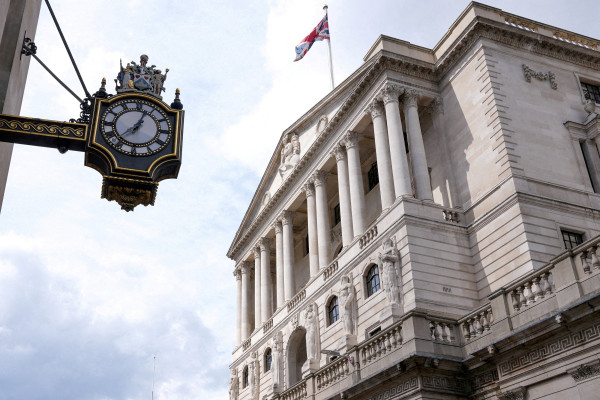

Early retirees are in the crosshairs of the Bank of England’s chief economist Huw Pill, who blamed their ‘great resignation’ following Covid-19 for contributing to the UK’s current rocketing inflation.
Stating the UK has 600,000 fewer workers than the BoE anticipated has led to employers raising wages more even though "the economy is stumbling into recession", he said.
Either way, the focus on retirees and savers is long overdue. The BoE’s decision to raise interest rates – from 0.1 per cent a year ago to 3 per cent this month – has caused much consternation, particularly as regards the impact on mortgage rates.
However, there are considerably more pensioners in the UK than mortgage-holders, around 8mn pensioners compared with around 6.8mn mortgage holders (in 2020).
It is pensioners and savers who have been at the sharpest end of the decade-long period of ultra-low interest rates. Nine out of 10 Britons have some savings; the 2019-20 total subscribed to cash Isas increasing to £73bn, up by 7.4 per cent on the previous year.
This savings habit is now being instilled in our children with more than 1mn Junior Isas now in existence with £971mn subscribed in 2019-20, of which nearly two-thirds (£597mn) was held in cash.
While it is likely that borrowers probably comprise the most economically active participants – especially in the corporate and property sectors – we must remember that ultra-low interest rates were initiated by the BoE in the wake of the global financial crisis of 2007-08.
As an emergency measure to save the economy in 2009, the drop in the BoE’s base rate to the unprecedented level of 0.5 per cent a year – followed by the extra emergency drop to 0.1 per cent in September 2020 because of Covid – ushered in a long era of extreme financial repression for savers and pensioners.
Savers who were once able to earn a regular 3 per cent to 4 per cent a year in the building society or investors who were used to having their pension pots in ultra-safe gilts suddenly found the financial ground cut from beneath their feet.
With gilt yields falling to some of the lowest levels ever seen in my lifetime and consequently the interest rate offered by banks and saving institutions lowered to levels that almost equated to zero, there began what has ended up as an almost 14-year period of pain meted out to savers and investors.
Was this fair to the savers and investors who significantly outnumber borrowers?
Interest rates were long overdue a return to their median range, even before inflation started rearing its ugly head in 2021.
As US Federal Reserve chairman Jerome Powell unambiguously stated, inflation is the number one enemy and, here in the UK, remains the BoE’s statutory remit.
As inflation rises higher than originally anticipated, rates are having to be raised higher and faster than any central banker would like. It was just a question of when and how sharply.
The simple fact is that rates – which essentially set the ‘cost of capital’ – have belatedly begun the painful journey back to their long-run average of around 5 per cent.
In raising rates, the BoE is trying to gently drain the economy of liquidity so as to achieve a disinflationary soft landing where economic activity is gradually adjusted.
It is a fine balance, not helped if at the same time the chancellor of the exchequer is also trying to plug the hole in the nation’s finances by raising taxes and cutting spending. When people and companies stop buying things, it is a recession.
Not all doom and gloom
However, for the silent majority of savers and investors, the situation is set to improve.
Cash deposits are already attracting interest of 4.5 per cent. Annuity rates for pensioners and retirees, for so long pinned down by low gilt rates, have soared with about 6 per cent plus guaranteed annual returns on offer.
House prices are moderating; Knight Frank research predicts a 10 per cent to 15 per cent fall over the next 12 months – a welcome palliative for house-buyers facing those higher mortgage rates.
Corporate bonds, which took the full force of the dramatic turn-around in interest rate predictions earlier this year, now offer some very attractive gross redemption yields of 6 per cent, 7 per cent or 8 per cent from highly-rated companies.
Companies holding cash on their balance sheets, estimated by the BoE to be £750bn, can finally earn some meaningful level of interest.
The whole banking sector should benefit from an enhanced net interest margin, which ultimately underpins the support and funding needed for a growing economy.
So, notwithstanding the dangers of inflation, rising interest rates can be seen as an opportunity for some areas of the market, with benefits and rewards for many.
James Johnsen is director of Church House Investment Management




